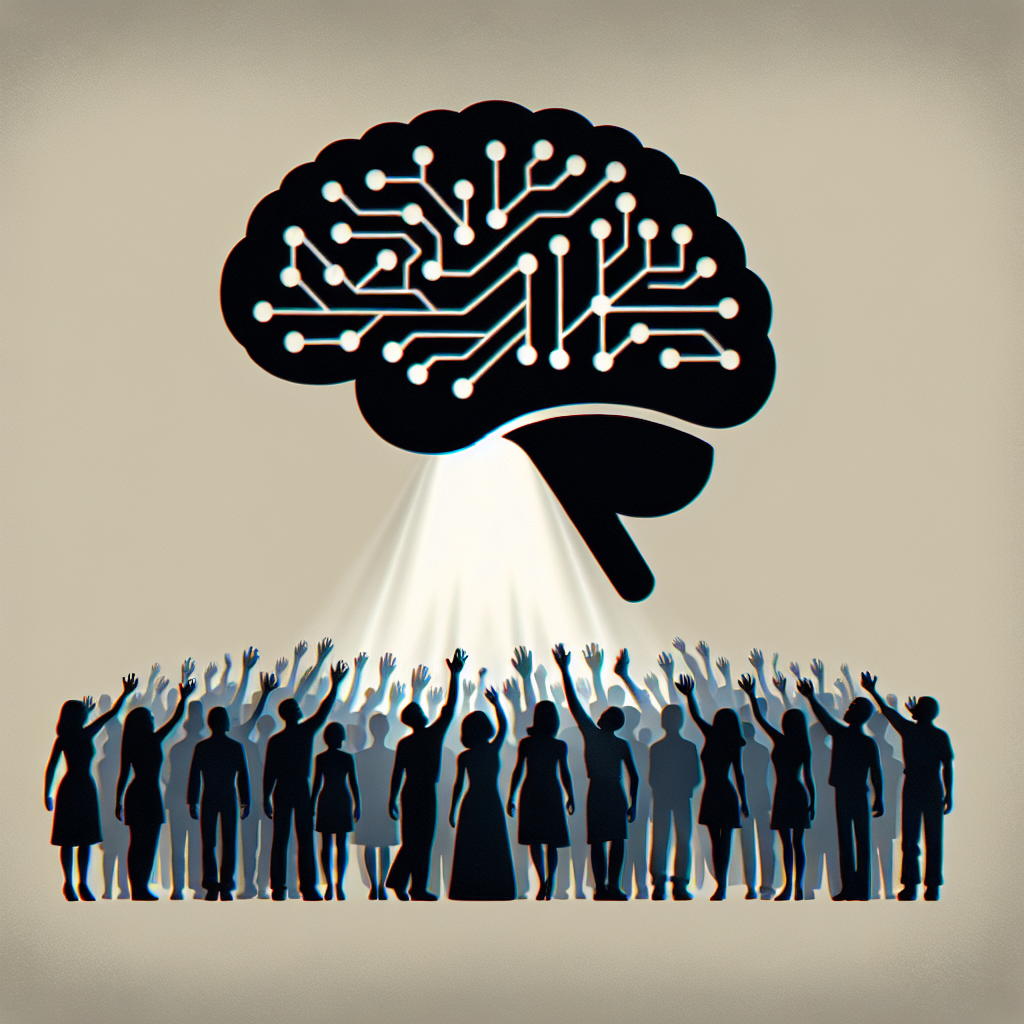The Democratization of AI: A Revolution in Technology
Artificial Intelligence (AI) has rapidly become one of the most transformative technologies of the 21st century. From self-driving cars to personalized recommendations on streaming services, AI is already changing the way we live and work. But as AI becomes increasingly integrated into our daily lives, there is a growing movement towards democratizing AI – making it more accessible and inclusive for everyone.
What is the Democratization of AI?
The democratization of AI refers to the movement towards making AI technology more accessible to a wider range of users, including non-experts and individuals from diverse backgrounds. This includes lowering the barriers to entry for using AI tools, providing more resources and training for people to learn about AI, and ensuring that the benefits of AI technology are available to all.
Why is the Democratization of AI Important?
There are several key reasons why the democratization of AI is important:
1. Inclusivity: By democratizing AI, we can ensure that people from all walks of life have access to the benefits of AI technology. This can help to reduce inequality and ensure that everyone has the opportunity to participate in the AI revolution.
2. Innovation: By opening up AI technology to a wider range of users, we can unlock new ideas and perspectives that can drive innovation in the field. This can lead to new breakthroughs and advancements in AI technology that benefit society as a whole.
3. Empowerment: Democratizing AI can empower individuals and communities to harness the power of AI for their own needs and goals. This can lead to new opportunities for economic growth, education, healthcare, and more.
How is AI Being Democratized?
There are several ways in which AI is being democratized:
1. Open Source Tools: Many AI tools and libraries are now available as open source software, allowing anyone to access and use them for free. This includes popular libraries such as TensorFlow and PyTorch, which are widely used by researchers and developers around the world.
2. Online Courses and Resources: There are now a wealth of online courses and resources available for people to learn about AI, regardless of their background or experience level. Platforms such as Coursera, Udacity, and edX offer courses on topics ranging from basic AI concepts to advanced machine learning techniques.
3. AI Platforms and Services: Companies such as Google, Microsoft, and Amazon are providing AI platforms and services that make it easier for developers to build and deploy AI applications. These platforms often include pre-trained models, tools for data processing and visualization, and APIs for integrating AI into existing software.
4. Community Engagement: There is a growing community of AI enthusiasts and professionals who are actively working to democratize AI. This includes organizing workshops, hackathons, and other events to help people learn about AI and collaborate on projects.
What are the Challenges of Democratizing AI?
While there are many benefits to democratizing AI, there are also several challenges that need to be addressed:
1. Bias and Fairness: AI systems can inherit biases from the data they are trained on, which can result in discriminatory outcomes. Ensuring that AI is fair and unbiased requires careful attention to data collection, model design, and evaluation.
2. Privacy and Security: AI systems often rely on large amounts of data to make predictions and decisions. Ensuring the privacy and security of this data is crucial to building trust in AI technology.
3. Education and Training: Not everyone has access to the resources and training needed to learn about AI. Addressing the digital divide and providing opportunities for people to learn about AI is key to democratizing the technology.
4. Regulation and Governance: As AI becomes more widespread, there is a need for clear regulations and governance structures to ensure that AI is used responsibly and ethically.
FAQs
Q: How can I learn more about AI?
A: There are many online courses and resources available for people to learn about AI, regardless of their background or experience level. Platforms such as Coursera, Udacity, and edX offer courses on topics ranging from basic AI concepts to advanced machine learning techniques.
Q: How can I get started with AI development?
A: To get started with AI development, you can explore open source tools such as TensorFlow and PyTorch, which are widely used by researchers and developers. You can also take online courses to learn about AI concepts and techniques.
Q: What are some examples of AI applications?
A: AI is used in a wide range of applications, including image recognition, natural language processing, autonomous vehicles, and personalized recommendations on streaming services.
Q: How can I ensure that AI is fair and unbiased?
A: Ensuring that AI is fair and unbiased requires careful attention to data collection, model design, and evaluation. It is important to consider the potential biases in the data and to take steps to mitigate them.
Q: What are some ways that AI is being democratized?
A: AI is being democratized through open source tools, online courses and resources, AI platforms and services, and community engagement. These initiatives are making AI more accessible and inclusive for everyone.
In conclusion, the democratization of AI represents a significant opportunity to empower individuals and communities to harness the power of AI for their own needs and goals. By making AI technology more accessible and inclusive, we can unlock new ideas, drive innovation, and ensure that the benefits of AI are available to all. However, there are also challenges that need to be addressed, such as bias and fairness, privacy and security, education and training, and regulation and governance. By working together to address these challenges, we can create a more equitable and inclusive future for AI technology.

